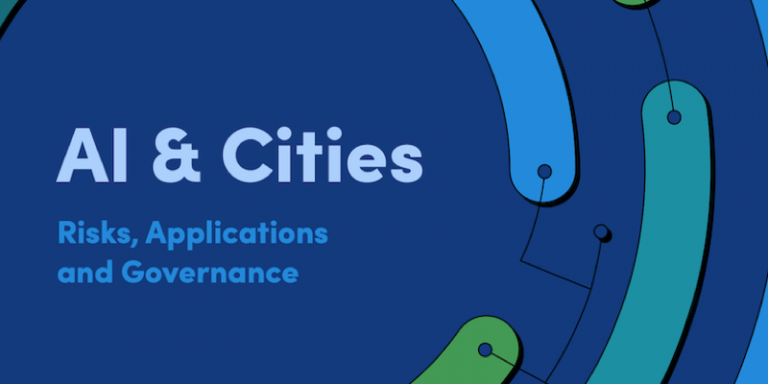
UN-Habitat, the United Nations program responsible for promoting sustainable urbanization in more than 90 countries, has released its report “AI & Cities: Risks, Applications and Governance”. A collaboration with Mila, a Quebec-based AI institute, the paper presents observations and recommendations on how AI systems could be harnessed to support the development of socially and environmentally sustainable cities and human settlements.
The report “AI & Cities: Risks, Applications and Governance” presents an overview of some of the urban applications of AI, the risks they may generate, defines specific approaches and tools for urban AI governance. The goal is to provide local authorities with the tools to assess the appropriateness of using AI rather than to instruct on what is or is not the right opportunity for a given context.
It is part of UN-Habitat’s strategy to guide local authorities in a people-centric digital transformation process in their cities or settlements.
The document is structured in five main parts: an introduction to AI, guidelines for AI governance, an overview of AI applications in urban areas, a risk assessment framework, and a guide for AI strategy.
Part 1 and Part 2: Definition and Governance of AI
First, the report defines AI, responsible AI, discusses different applications such as ML or DL, the opportunities AI offers for cities, and its current limitations. It then briefly discusses the importance of AI governance, which should be context-sensitive, human-friendly, and focused on the public interest, as well as some of its key challenges.
Part 3: Overview of AI applications in urban areas
AI is evolving at such a rapid pace that the potential number of applications in the urban context is now enormous. Part 3 identifies the key areas where it is particularly useful for cities and provides examples of AI applications for each of these areas.
The key sectors described include energy, mobility, public safety, water and waste management
waste management, healthcare, urban planning and urban governance.
Each application presented is a concrete example of an existing technology, this example explicitly supports sustainable development, inclusive development, and low carbon.
Each application area is linked to the Sustainable Development Goals (SDGs). A series of labels are used to indicate high impact and locally relevant, long-term efforts.
In addition, the applications are linked to specific risks in the risk management framework, although these links are provided for illustrative purposes.
Part 4: AI Risk Assessment Framework
The risk management framework provides an overview of AI risks, along with questions to assess them. It can be skimmed for a general understanding, but also provides the detail needed to support technical teams by starting with a general assessment of AI systems. The risks presented are not exhaustive, by the way.
The framework focuses on raising awareness of the issues frequently posed by AI technology and its social implications. Its objective is to enable cities to develop their own strategies to implement responsible use of AI for sustainable urban development.
It highlights the different risks in the entire life cycle of an AI system, which is divided into five phases: scoping, design, implementation, deployment and maintenance. Each risk is presented with a simple definition and concrete examples from different geographical locations. Graphs and links show the relationships between the risks.
Each risk is accompanied by reflective questions that function as an assessment toolbox. With an emphasis on awareness rather than “techno-solutionism,” the questions provide guidance for appropriate mitigation strategies. They thus highlight possible venues for intervention to mitigate risk while still being based in the specific context.
The assessment of potential risks associated with AI systems must be done from a holistic perspective, encompassing both technical and societal considerations. Only when stakeholders clearly understand the structure and limitations of an AI system can they take full advantage of it and optimize the system’s operation in each particular context.
Part 5: Urban AI Strategy
This urban AI strategy is a practical guide to help cities and local authorities develop AI systems consistent with inclusive and sustainable development goals and a means to articulate context-specific local goals, as well as plan steps to leverage them.
This section focuses on concrete practical recommendations and suggestions for local authorities to develop an AI strategy and governance framework.
It reflects on creating an enabling environment, promoting cooperation and building local capacity. In addition, key tools that are particularly useful for supporting urban AI strategies, such as algorithmic registries or algorithmic impact assessments, are highlighted in a short case study.
You can access the full report by clicking on this link.
Translated from Focus sur le rapport ONU-Habitat / Mila : “AI & Cities : Risks, Applications and Governance”









